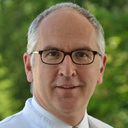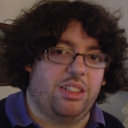'Infantile convulsions' in the early nineteenth century. Abnormal brain blood flow and leeches, teething and gums' scarification and food and purgatives: the historical contribution of John Clarke (1760-1815).
Հիմնաբառեր
Վերացական
In this article, we discuss on the role of the British physician and midwifery practitioner John Clarke (1760-1815) in the characterisation of the various types of seizures and epilepsy and related phenomena ('convulsions') occurring in children. In his unfinished work Commentaries on Some of the Most Important Diseases of Children (1815), Clarke discussed the pathophysiology of convulsions and was the first to describe, 12 years before the French neurologist Louis Francois Bravais (1801-1843) and more than 30 years before the Irish-born physician Robert Bentley Todd (1809-1860), the postictal paresis. He believed that convulsions originated from changes in pressure within the ventricles as a consequence of abnormal blood flow to the cerebral vessels. In keeping with the theories of his time (e.g. Baumes 1789, 1805; Brachet 1824), Clarke believed that teething was a major cause of 'infantile convulsions'. His proposed remedies ranged from scarification of the gums to ammonia, application of leeches, cold water, and purgatives. The use of antispasmodics, quite popular at the time, was instead questioned. In his Practical Observations on the Convulsions of Infants (1826), the London practitioner and midwifery John North (1790-1873) deeply criticised Clarke's view that convulsions arise inevitably as a consequence of organic brain lesions. North inferred that the results of autopsies of children who had died of convulsions revealed no brain damages, and claimed that cerebral irritation could also occur as the effect of distant lesions. Other Clarke's contemporaries (e.g. Jean Baptiste Timothée Baumes-1756-1828) inferred that all convulsions reflected a hereditary diathesis, which rendered children (especially those with softer and limper nervous and muscular tissues!) extremely sensitive to all sorts of provocation that could trigger convulsions, including bad digestion (more pronounced at the time of teething), loud noise, and bright light. Although almost every aspect of Clarke's view on convulsions was subsequently proved wrong, his (and his contemporaries') work provides fascinating insights into the theories and therapies of seizures, which were popular at the dawn of modern neurology.




